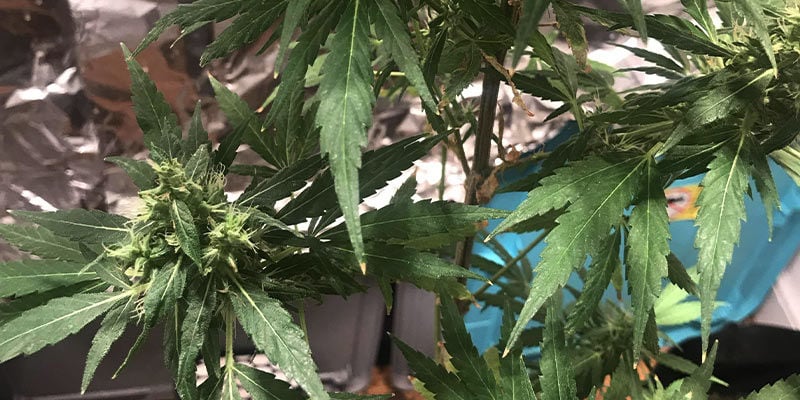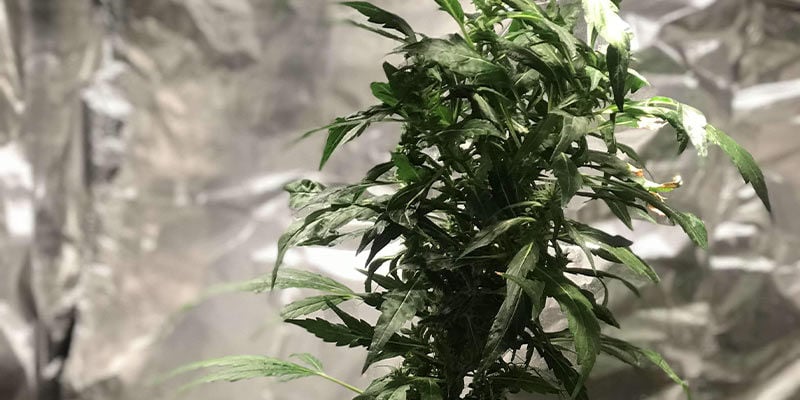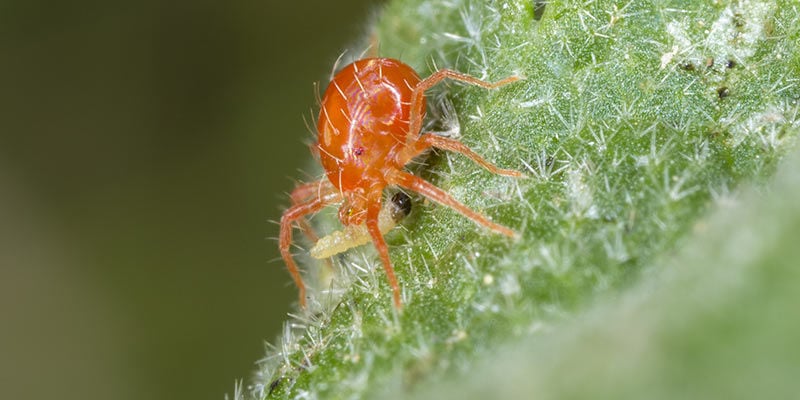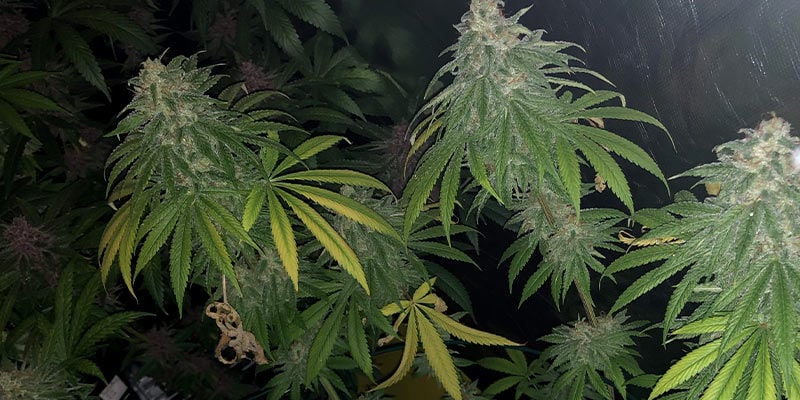Broad Mites In Cannabis: How To Treat And Prevent

As is with most living things, cannabis also has to deal with numerous pests. Some plants become riddled with fungus gnats, while others have to ward off caterpillars. Another common pest that these plants have to face is broad mites.
Broad mites are a grower’s headache, mainly because they’re too small to locate. Before you even notice something’s wrong, your precious plants are already bearing the brunt of the damage. Learning to spot and solve a broad mites issue, before it’s too late, is an important skill for any grower.
If broad mites have become the bane of your existence as a cannabis cultivator, this article will tell you more about what they are and how to deal with the problem.
What Are Broad Mites?

Broad mites, Polyphagotarsonemus latus, are a microscopic type of mite that lives in a range of plants. In fact, they pose a problem to the agricultural industry at large—not just cannabis grows. They have six legs, located towards the front of the body, and a small mouth that is used to penetrate the surface of a plant, and then suck out sap.
As mentioned in the intro, what makes broad mites a difficult issue is that they are so small. Without the use of a magnifying glass, you can only spot a broad mite problem when it’s become a full-blown infestation.
Are broad mites and russet mites the same?
Just like broad mites, russet mites suck the nutrients out of the leaves of a cannabis plant. Similarly, they target the younger growth areas, causing leaves to discolor and turn yellow.
But the main difference between these two species of mites is that russets are larger. They also have an elongated body akin to a carrot. Whereas broad mites have more of a dew-drop shape. Russets also only have four legs, fewer than broad mites.
Broad Mites on Cannabis Plants

Broad mites feed on plants to live, and that includes cannabis plants. They cannot exist without depending on leaves for food. They are usually found in the plant’s lower, older areas, but some of them can be seen in newer growth regions. They attack the plant by sucking out nutrients from its leaves, disrupting the process of photosynthesis. In time, this can severely damage the plant and its ability to grow.
As for how they get from one cannabis plant to another, one way this transfer happens is by plant-to-plant contact. Another way would be through the movement of larger insects such as whiteflies.
Signs of broad mite damage on cannabis plants
Despite being hard to spot, there are tell-tale signs of broad mite infestation on cannabis plants. Here are some of the things to look out for:
- Newer leaves appear wet
- Young leaves have a dark brown discolouration on the edges
- The growth of new leaves is either drooping or twisted
- Buds appear sickly or even die off during the flowering stage.
- Inconsistent damage, with the areas of infestation appearing to be more impaired
How to Treat Broad Mites

Broad mite infestation doesn’t automatically mean your plants would be compromised to the point of irreparable damage. There are ways to remedy this problem, but as with most issues in life, fast and decisive action will make your life (and that of your plants) much easier!
Immediately remove infected plants
As mentioned, broad mite damage is inconsistent, and there is an upside to that. You can remove the infected plants to prevent a more widespread infestation.
By doing this, you significantly reduce the number of bugs and therefore hinder further damage. But the key here is early detection. Once you spot one of the aforementioned signs, immediately take action.
It may be that you have to destroy the infected plants. Even though this will hurt, it’s much better than allowing your entire crop to become infested.
Introduce predatory mites

Another way to get rid of your broad mite problem is by adding a predatory mite to prey on these pests. One good example is the Amblyseius andersoni, which also feeds on other pests like spider mites, fruit tree mites, and whitefly eggs.
Amblyseius andersoni usually come in a container like a shaker tube. They are usually applied in small quantities onto the crop next to the flowers. However, they should be kept away from direct sunlight and must be used within the first 18 hours of receiving them.
Spray plants regularly with neem oil
Neem oil is a natural pesticide made from vegetable oil that’s been pressed from the seeds and fruits of the neem plant. It has a yellow-brown color with a bitter taste and a sulfur-like smell.
Using neem oil on cannabis plants may compromise their taste, and could damage them in the long run. However, it’s deemed to be highly effective against pests. If possible, don’t spray neem oil onto a plant’s flowers.
Neem oil should be used as a final option if other less invasive ones don’t work. For this, you may need a one-hand pressure sprayer to ensure even coverage on leaves. Experts would recommend it for daily use, especially if the broad mite infestation is severe.
How to Prevent Broad Mites
Prevention will always be better than cure. If you’d rather save yourself from the headaches of remedying damaged plants, here are some steps you can take.
Manage temperature and humidity
Broad mites are known to have a high sensitivity to heat. By keeping the surrounding temperature within the range of 43°C to 48°C, you ultimately lower the chances of infestations. However, be sure to limit plant exposure to such temperatures to 15 minutes to avoid damage. What’s more, getting a space up to these temperatures can be very difficult and expensive.
As for humidity, be sure that they are lower than 60%, as it is the level at which broad mites tend to thrive.
Practice good housekeeping
Good housekeeping means keeping your grow areas tidy. Don’t make it an environment that would be conducive for broad mites to flourish. It’s all about proper maintenance, which is required when growing cannabis plants.
Some good practices would be to wipe down floors and ceilings if you are using a grow room or tent. You can also use companion plants and even keep your crops covered if you’re growing outdoors.
Check cannabis plants often
Pests like broad mites don’t issue warnings when they attack. If you don’t do regular checks, you’ll be left unpleasantly surprised one day upon seeing your plants badly compromised. And depending on how far along the infestation is, you could be looking at some serious issues.
Regular checks could be the best preventive measure to ward off broad mites. Some experts would recommend checking on them at least three times per day, and to also make sure that water and pH levels are correct.
Can Cannabis Plants Recover From Broad Mites?

Indeed, cannabis plants can recover from broad mite infestation. The key here is prevention and regular care. Watch over your plants and do regular spot checks to see if there are any signs of an infestation.
And if treatment is necessary, be sure to act immediately.









 United States
United States













